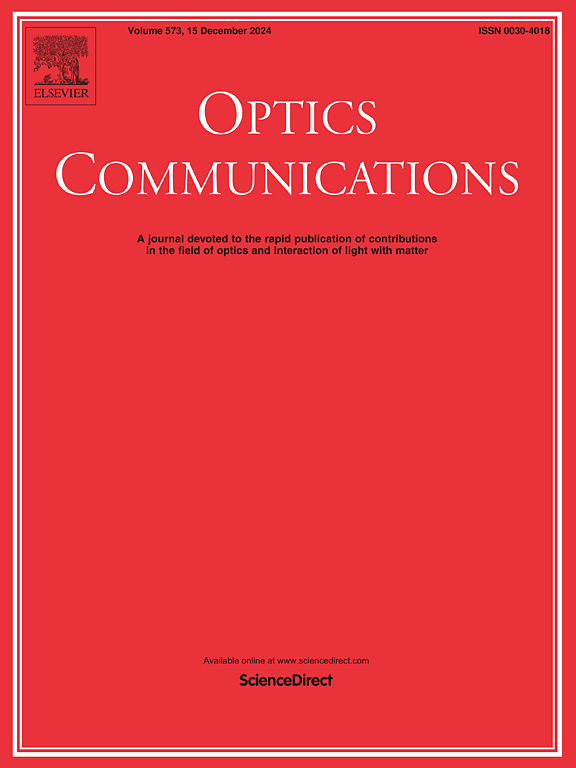Three dimensional amplitude modulation and demodulation technology based on independent dual sideband optical communication system
IF 2.2
3区 物理与天体物理
Q2 OPTICS
引用次数: 0
Abstract
This article proposes the use of Three Dimensional Amplitude Modulation (TDAM) and demodulation techniques in independent dual sideband systems without increasing the modulation order of the carrier amplitude. This system generates two columns of random binary sequences digitally. One is modulated with 3D-8QAM at −13 GHz, and the other is modulated with 3D-8QAM at 29 GHz with half amplitude. Then, the three dimensions x, y, and z of the three-dimensional signal are modulated onto the carriers , and , respectively, so that the left and right independent sidebands are superimposed in the IQ modulator. At the receiving end, two independent sideband signals are received through a single photodiode (PD). After PD square law conversion, a three-dimensional 8TDAM signal is synthesized, and then separated and demodulated by a digital signal processing (DSP) to obtain two separate three-dimensional signals. The simulation results show that the system can successfully achieve 8 Gbaud independent 8TDAM signal 20 km SSMF transmission, with an HD-FEC threshold of 3.8 × 10−3 and an error rate of 7 %. The system has demonstrated that three-dimensional signals can be transmitted independently in both sidebands, greatly simplifying the system structure, further reducing implementation costs, and improving spectral efficiency. The highest spectral efficiency can reach 3.692bit/s/Hz.
求助全文
约1分钟内获得全文
求助全文
来源期刊

Optics Communications
物理-光学
CiteScore
5.10
自引率
8.30%
发文量
681
审稿时长
38 days
期刊介绍:
Optics Communications invites original and timely contributions containing new results in various fields of optics and photonics. The journal considers theoretical and experimental research in areas ranging from the fundamental properties of light to technological applications. Topics covered include classical and quantum optics, optical physics and light-matter interactions, lasers, imaging, guided-wave optics and optical information processing. Manuscripts should offer clear evidence of novelty and significance. Papers concentrating on mathematical and computational issues, with limited connection to optics, are not suitable for publication in the Journal. Similarly, small technical advances, or papers concerned only with engineering applications or issues of materials science fall outside the journal scope.
 求助内容:
求助内容: 应助结果提醒方式:
应助结果提醒方式:


